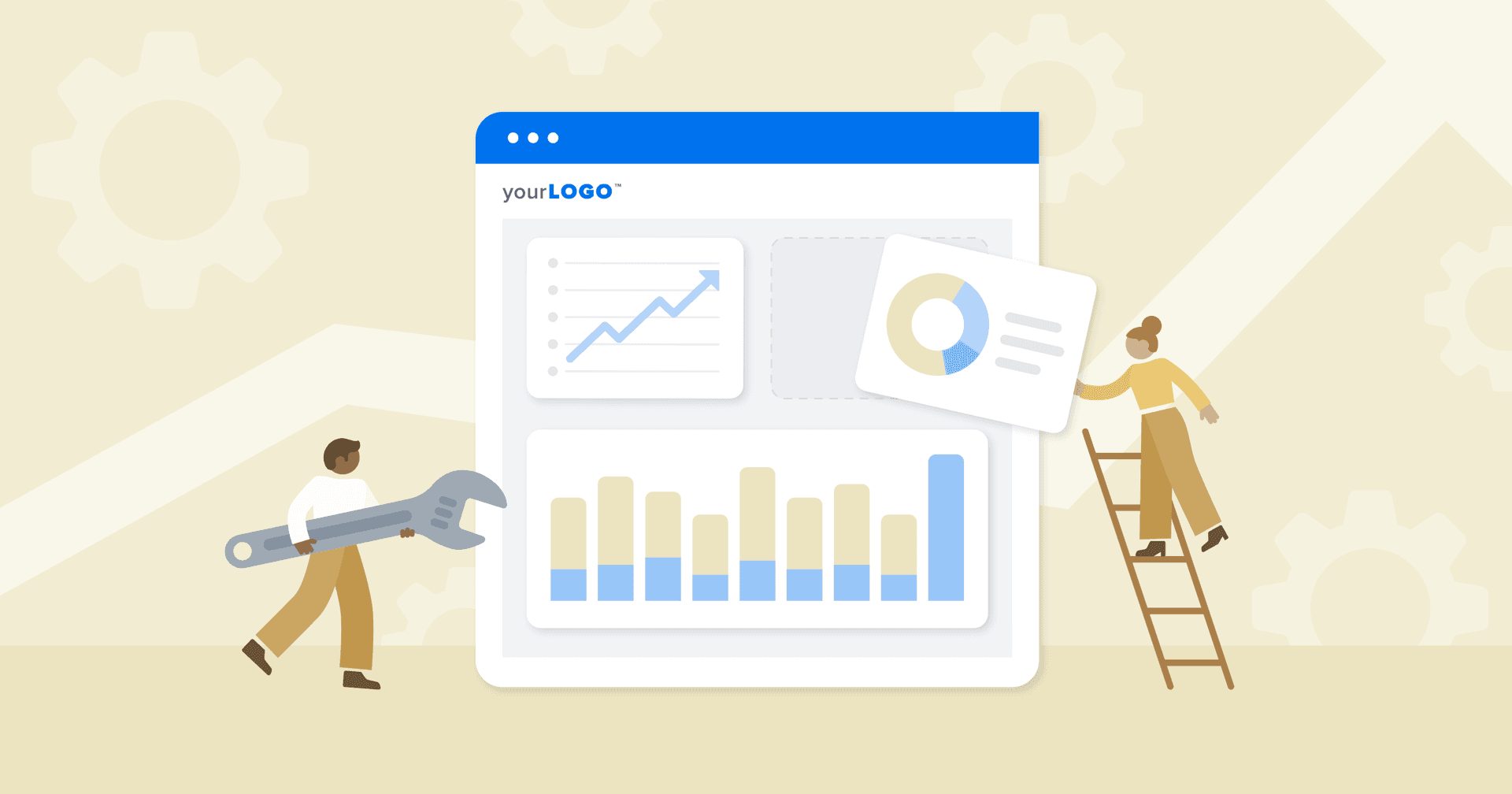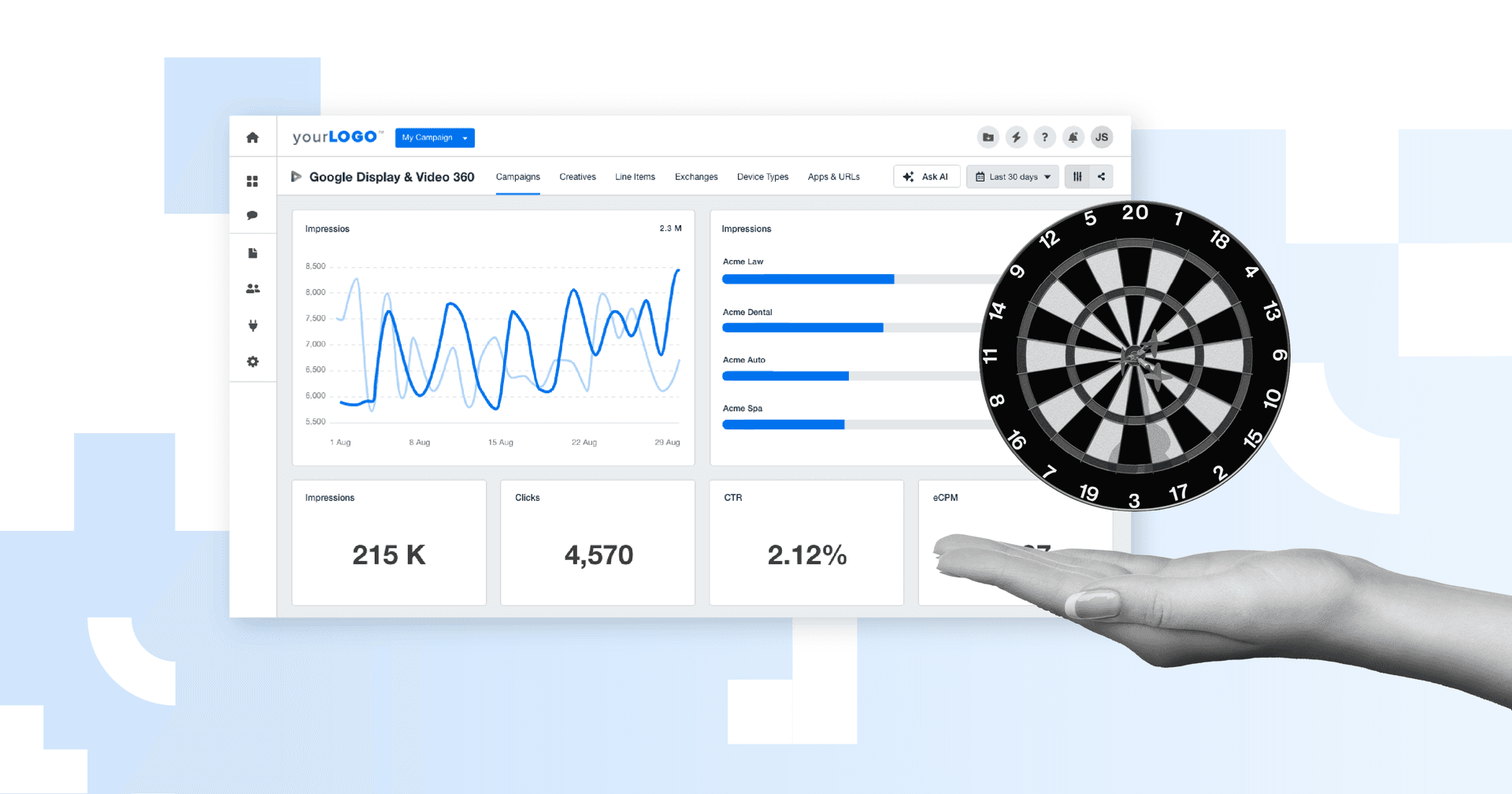Table of Contents
Table of Contents
- Client Reporting
- Pre-Meeting Preparation: Setting the Stage for Successful Client Meetings
- Meeting Structure: Clear Communication and Focused Agendas
- Post-Meeting Follow-Up
- Client Feedback Loop
- Future Goal-Setting Sessions
- Contingency Planning and Mitigation Strategies
- Supplemental Communication Channels
- Summary and Key Takeaways
7,000+ agencies have ditched manual reports. You can too.
Free 14-Day TrialQUICK SUMMARY:
Preparing for client meetings with structured planning and transparent reporting strengthens communication and improves client retention. This guide from LeaseMyMarketing details strategies like using an all-in-one reporting tool and following a structured meeting format to present results and foster trust. Learn actionable techniques to build lasting client relationships and set the stage for meaningful, results-driven partnerships.
You can make all the promises you want when pitching a new client for business—and even deliver on them—but without transparent reporting and clear communication, client retention will suffer.
At LeaseMyMarketing, our solution boils down to two key factors: transparent and actionable client reporting, and an organized meeting structure.
When I started my business, I focused entirely on producing the best results possible for my clients. I thought this would be enough, but I quickly realized it wasn’t. Without a formal structure for client meetings and relying on a dozen different reports to showcase our performance, I struggled to tell a clear story.
It was hard to prove to clients what I knew was true—the digital marketing was working! I wanted to convince them to invest more in SEO or digital advertising, showing how phenomenal their results were on small budgets. But I couldn’t get the buy-in because, with 30 tabs open on a screen share to overview their marketing efforts, it felt like I was speaking a different language.
As our company grew, I made it a priority to implement a structured meeting flow to cover the most important topics within the available time. We also identified a tool that allowed us to showcase client results transparently and comprehensively—all in one place.
Today, I’ll teach you how to prepare for a client meeting, to get the long-term client retention results your agency is seeking.
Client Reporting
1. All-in-One, Transparent Reporting
In the early days of my agency, I found myself juggling dozens of browser tabs and multiple reports just to show a client how their digital marketing campaigns were performing. It was overwhelming—for them and for me.
To solve this, we turned to AgencyAnalytics, a platform that brings all of our data together under one roof. Now, instead of jumping between Google Ads, Facebook Ads, SEO tools, and web analytics dashboards, we showcase everything in a single, easy-to-read view.
Better yet, we build custom dashboards that focus on the exact metrics our clients care about most. Whether it’s leads, conversions, or website traffic sources, we highlight these KPIs in a way that’s clear and meaningful.
By giving our clients direct login access to the same dashboard we use internally, we’re not just sending them reports—we’re inviting them into the process. This level of transparency helps build trust with more clients and makes it easier for them to see the value we bring.
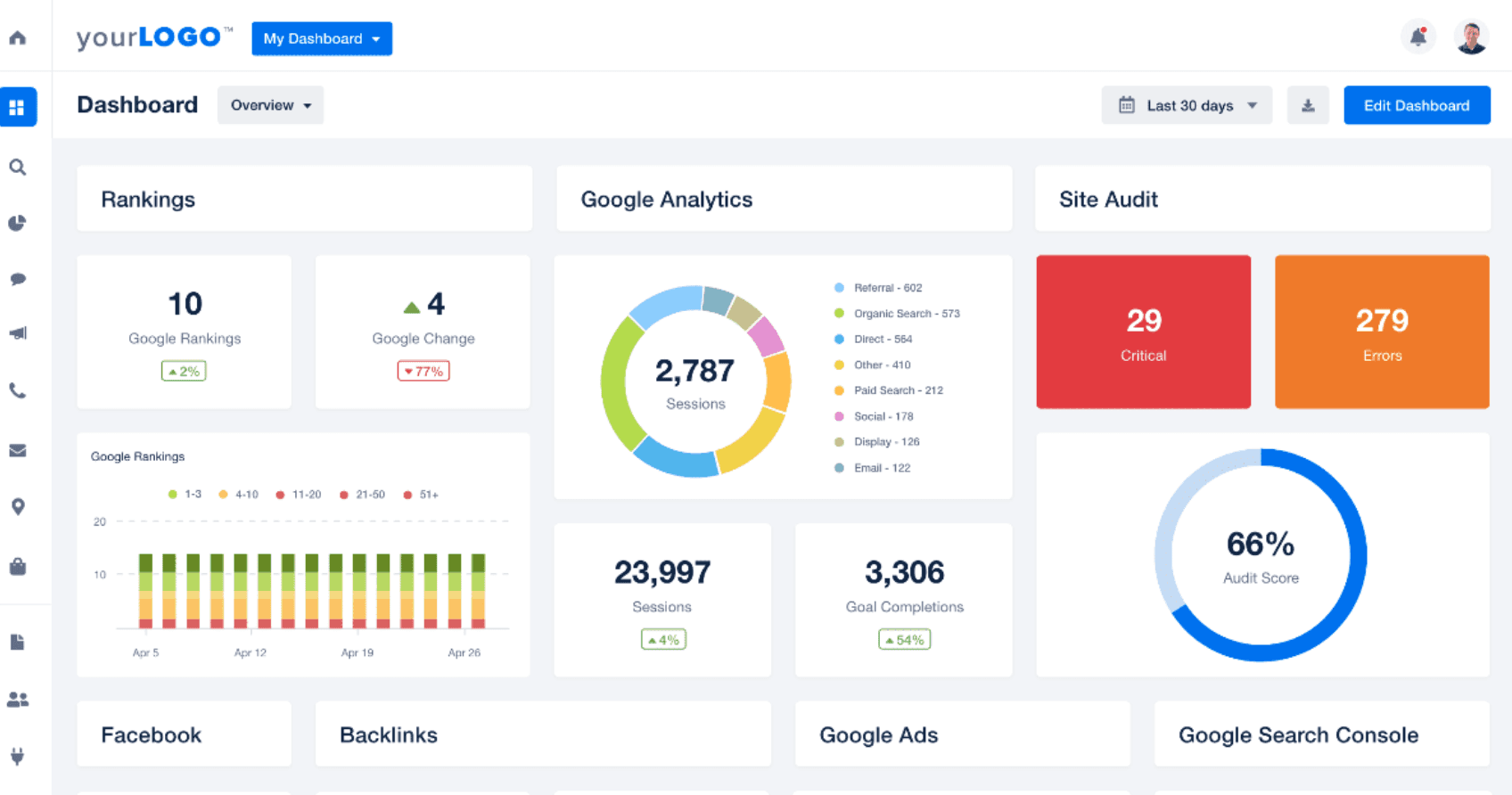
Highlight KPIs and streamline client and team collaboration with custom marketing dashboards. Try AgencyAnalytics free for 14 days.
2. Setting Up Goals
One of the most important shifts we made was moving from just tracking metrics to actively setting clear, measurable goals.
Within AgencyAnalytics, we establish specific targets—like a certain number of leads per month or a desired cost-per-acquisition—and track our progress automatically. These goals give both us and our clients a shared understanding of what success looks like, helping everyone stay focused.
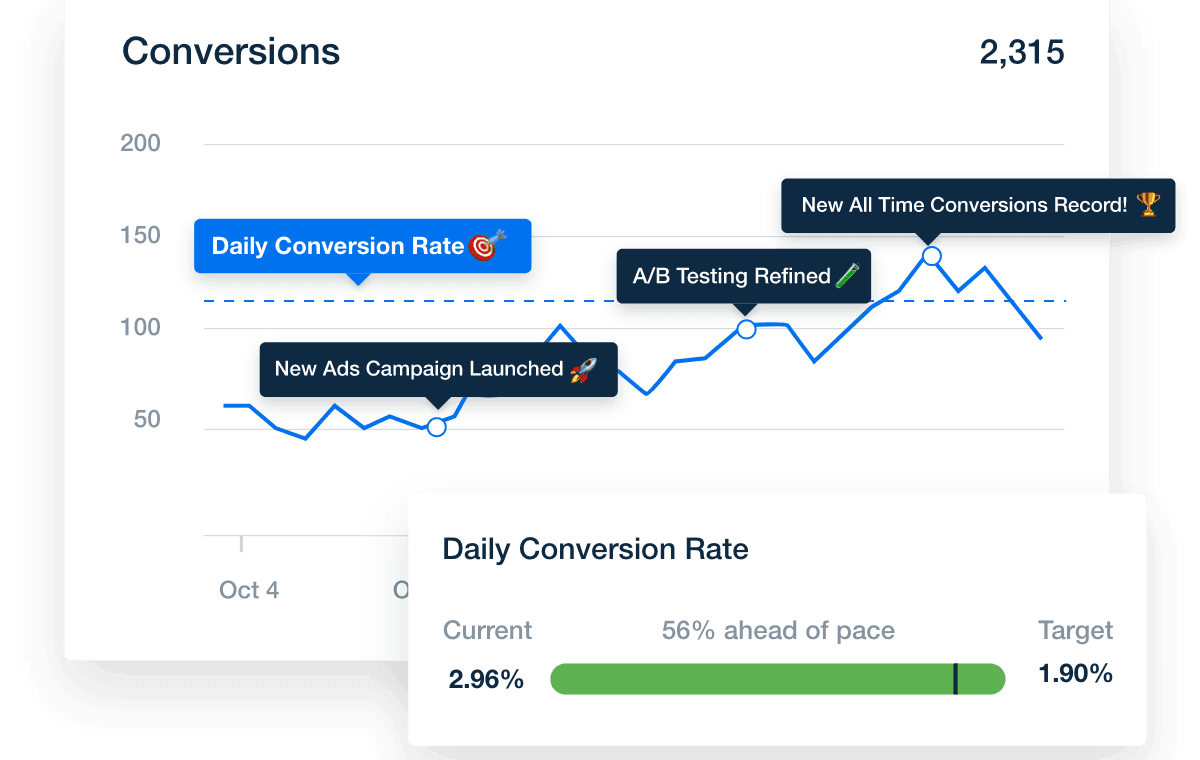
Create your own formulas that combine multiple data points for easy goal-tracking. Get started today with your 14-day free trial.
3. Milestone Alerts
In addition to goals and annotations, we use milestone alerts to stay on top of our progress. If we’re working toward, say, 100 new leads in a month, we’ll set weekly alerts at checkpoints like 25%, 50%, and 75%.

If we expect to fall behind at any stage, our team receives a heads-up, prompting us to investigate why and make adjustments before the month ends. This proactive approach ensures we’re never caught off-guard when it’s time to review campaign performance—and it gives us the ability to manage client expectations and course-correct early.
Not only do these alerts help us improve ongoing campaigns, but they also become powerful evidence of our effectiveness when it’s time for clients to consider renewing. By showing the client that we’ve stayed on track every step ahead of time along the way, we’re giving them confidence that their investment is paying off.
Mentioning alerts when meeting with prospective clients in an initial pitch is also a great idea–this emphasizes the ongoing efforts your agency makes to ensure that you’ll deliver on your promises.
Read More: Perfect Pitch Presentation Tips for Marketing Agency Leaders
4. Educational Resources & Glossaries
Not every client will be familiar with the marketing terms and metrics we use. To help bridge this gap, we provide a simple glossary of key metrics—like CTR (Click-Through Rate), CPA (Cost Per Acquisition), or ROAS (Return on Ad Spend).
Additionally, we create short video walkthroughs of our dashboards and reports so clients can learn at their own pace.
This empowers clients to interpret the data on their own, fostering confidence and understanding. Over time, as clients become more comfortable with the metrics, our discussions become more strategic and less about deciphering jargon.
Pre-Meeting Preparation: Setting the Stage for Successful Client Meetings
Our preparation doesn’t start five minutes before the meeting. Thoroughly preparing for a client meeting ensures that your team arrives with an understanding of client results, the knowledge they need to answer key questions, and effective suggestions for the next steps.
Meeting Agenda Preparation
Between sessions, our account managers dive into the data, touch base with our service teams, and look for specific insights and storytelling opportunities around the campaigns.
We align our automated reports to the meeting schedule, so clients receive a fresh PDF summary a few days beforehand. This gives them time to review results at their own pace, jot down questions, and come into the meeting ready to have a productive conversation.
Research and Reporting
By the time the meeting rolls around, we’ve already analyzed performance, discussed results internally, and identified any areas that need attention. The IDS portion of the agenda is prepped (more on this shortly), and we’re ready to walk clients through both our successes and any recommended tweaks or next steps.
Clients appreciate that we’re not just reading numbers off a screen; we’re telling a story about their campaigns—how they’ve grown, where they stand today, and what’s coming next.
Read More: Must-Have Data Visualization Tools to Transform & Inform Your Insights
Prepping the Dashboard
Before the call, we ensure our AgencyAnalytics dashboards are presentation-ready. We format charts, confirm everything is up-to-date, and set the dashboard to “presentation mode” so we can guide our clients smoothly through their metrics. Doing this legwork behind the scenes ensures that our clients’ valuable time isn’t wasted and that they walk away feeling informed, respected, and engaged.
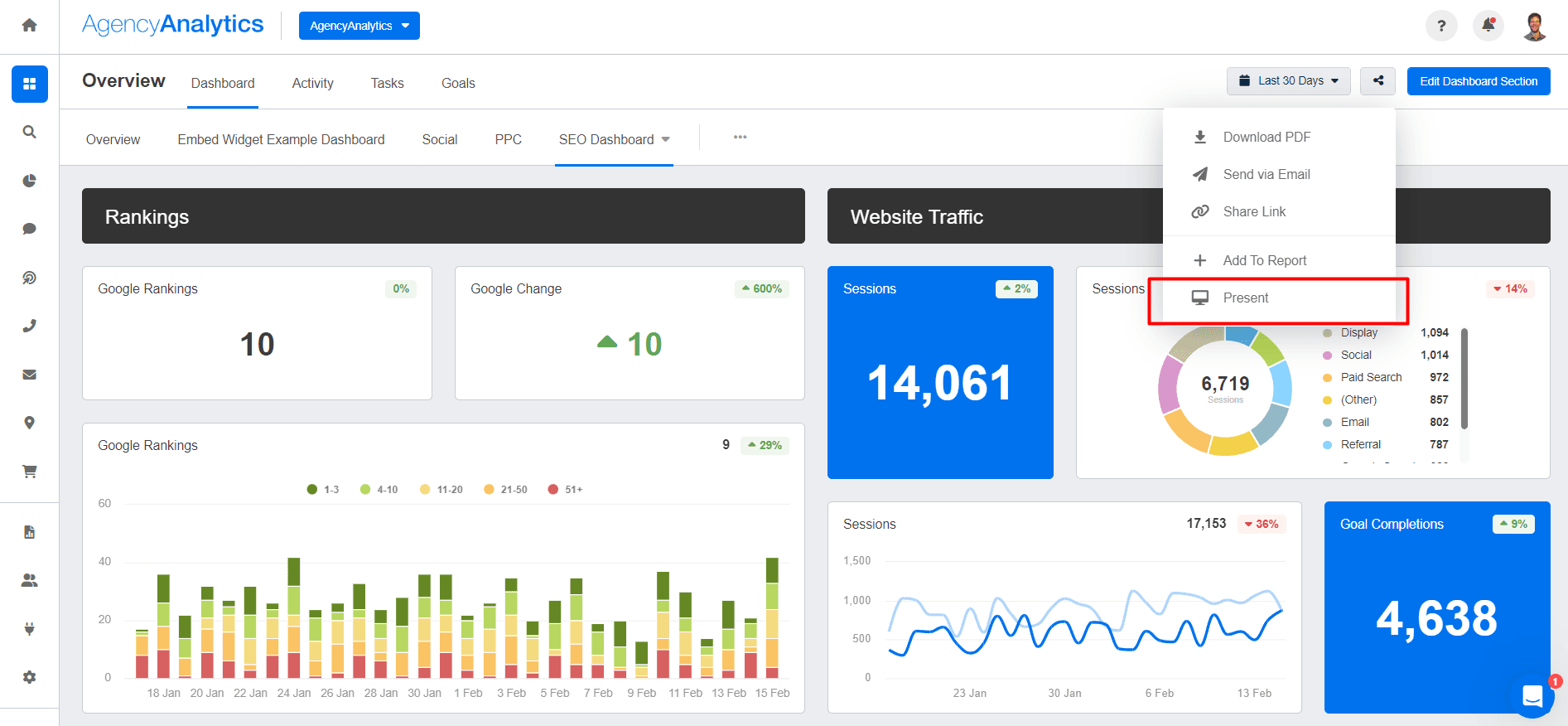
Agenda Distribution
Before every client meeting, we share the meeting agenda and updated reports a few days in advance. This gives clients time to review their marketing metrics, note any questions, always be prepared for client meetings, and arrive ready to discuss what matters most—rather than spending the first part of the meeting catching up.
Internal Team Alignment
Our account managers, service teams, and analysts also sync up before each client meeting. Together, we review the latest data, discuss any emerging trends or issues, and highlight key successes. By aligning internally, we ensure that when we meet with clients, we present a unified, well-informed perspective.
Read More: 5 Key Steps To Run an Effective Client Reporting Meeting
Meeting Structure: Clear Communication and Focused Agendas
A big challenge I faced early on was keeping client meetings organized and impactful. It’s one thing to show great data, but another to communicate it effectively. Over time, we refined our approach and now rely on a structured meeting agenda inspired by the “IDS” format (Identify, Discuss, Solve).
This approach ensures that every meeting runs smoothly, we prioritize the most important topics, and we have a clear system for addressing issues that come up.
Meeting format
1. Headlines: We start by quickly sharing important updates—like a big spike in conversions or a new campaign we’ve launched—without diving into deep conversation. This sets the tone and captures key talking points, right away.
2. To-Do List Review: Next, we revisit the action items from our last meeting. Completed tasks get checked off, and anything still pending gets a quick status update. If an item needs more discussion, we move it down to the IDS section to give it the attention it deserves.
2. Reporting: With the help of AgencyAnalytics, we present a high-level performance summary that’s easy to understand. We use features like insights and benchmarks to highlight wins, identify challenges, and suggest improvements.
This helps clients see exactly how we’re performing against their industry’s standards—making it clear where we’re excelling and where we might need to adjust.
Agency Tip: The new Insights features from AgencyAnalytics empower agencies to benchmark client performance against industry standards, identify anomalies in performance, and forecast future trends. Plus, AI Summaries and Ask AI make it easy to quickly surface key information from the reporting period in just a few clicks. These tools save your agency time, while helping to identify the best talking points for your next client meeting. Wondering how to prepare for a meeting with a potential client? Pull their data ahead of the meeting and use these same tools to truly wow prospective clients with your agency’s knowledge and expertise.
4. IDS (Identify, Discuss, Solve): Here’s the heart of the meeting. We review the issues we’ve flagged as needing deeper conversation. Together with the client, we pinpoint the core problem (Identify), explore potential solutions (Discuss), and agree on next steps (Solve).
By the end of this segment, everyone knows what’s going to happen next and who’s the person responsible for making it happen.
5. Conclusion: We close by recapping next steps, confirming new action items, some pain points, and setting the stage for the next meeting. This leaves clients feeling confident that progress is being made and that we’re all on the same page.
Read More: A Therapist-Turned-Agency-Owner’s Guide To Tough Client Conversations
Post-Meeting Follow-Up
Client communication doesn’t end when the meeting’s over. Following up afterwards is critical to keeping the conversation going, and further entrenching your relationship with the client.
Recap and Notes Distribution
Within 24-48 hours after each meeting, we send out a concise summary of what was discussed and decided. This recap includes any solutions identified during IDS, the updated to-do list, and next steps with assigned responsibilities. This ensures no detail slips through the cracks and everyone remains on the same page.
Action Item Tracking
Each action item agreed upon in the meeting is entered into our project management software with clear assignees and due dates. This accountability framework means tasks aren’t forgotten once the call ends; instead, they’re actively managed and completed on schedule.
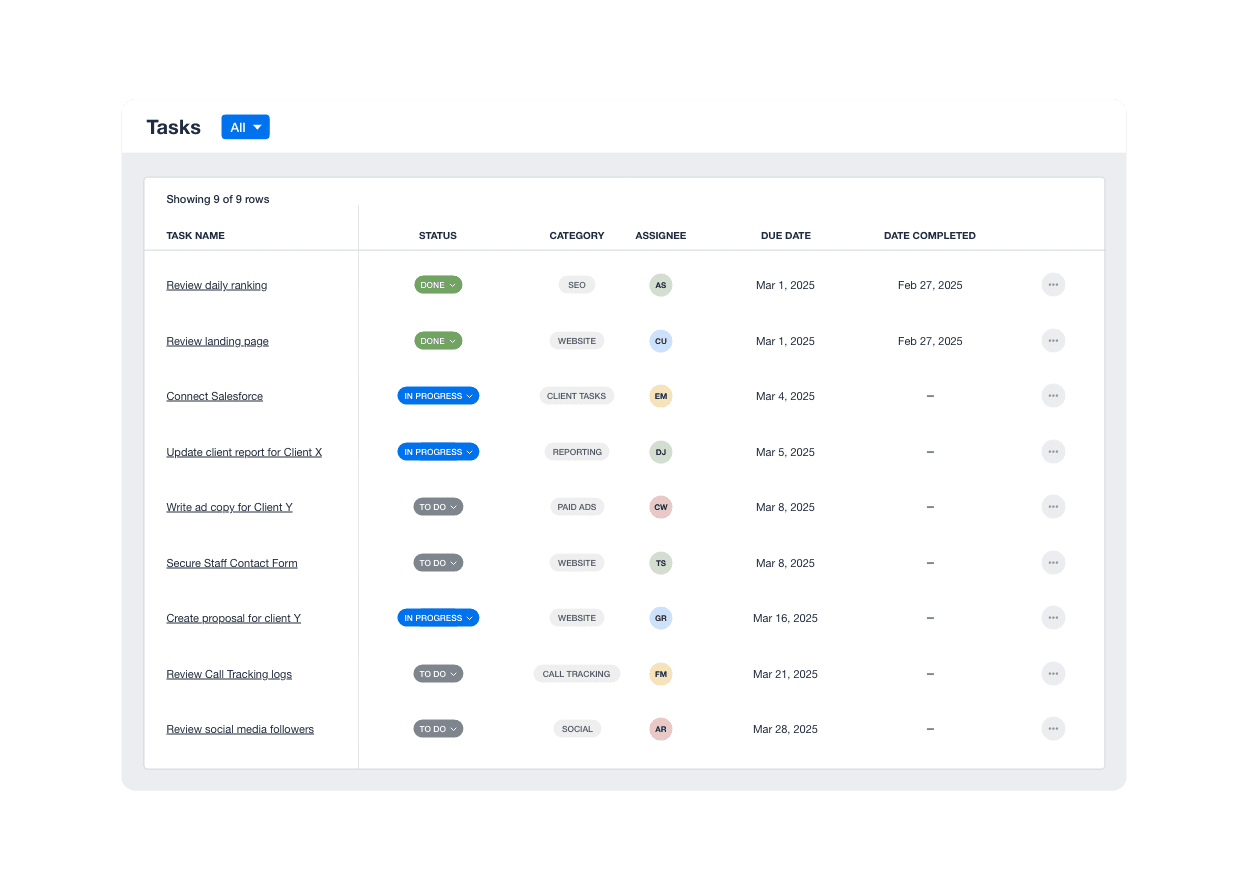
Streamline teamwork, track progress, and manage tasks—all within the same platform where you monitor client campaigns. Try the Tasks feature from AgencyAnalytics free for 14 days.
Client Feedback Loop
Gaining ongoing client feedback helps ensure that our meetings remain as effective as possible. We gather feedback from our clients in a few different ways.
Surveys or Feedback Forms
We periodically invite clients to share feedback on our meeting process and reporting methods.
Are our dashboards clear and intuitive?
Are the agenda and follow-up processes working well?
Even a short survey highlights areas where we can improve.
Read More: Client Breakups: How to Conduct a Client Exit Interview
Continuous Improvement
We take client feedback seriously. If they suggest new KPIs, a different reporting cadence, or a more visual representation of data, we evaluate these ideas and implement them as appropriate.
Over time, this adaptive approach makes our engagements increasingly valuable and tailored to each client’s unique needs.
Future Goal-Setting Sessions
Beyond the regular meetings, we schedule periodic strategy sessions–often quarterly or annually–to focus on the big picture.
We revisit long-term goals, reassess KPIs, and discuss how external factors might influence our strategies. These sessions ensure our efforts remain aligned with the client’s evolving objectives.
Contingency Planning and Mitigation Strategies
While our extensive preparation does prevent a lot of headaches, it’s impossible to avoid every risk involved in managing a client’s marketing. Here’s how we keep things on the rails when an unexpected event occurs:
Handling Underperformance
If we notice performance lagging behind established milestones, we address it promptly. We discuss potential reasons with the client's background first, consider adjustments, and agree on how to course-correct. By proactively communicating challenges, we maintain and build client trust and demonstrate adaptability.
Risk and Opportunity Forecasting
We don’t just react to data; we anticipate changes. Whether it’s holiday season marketing trends, upcoming regulatory shifts, or emerging ad platforms, we work with clients to understand potential impacts and plan accordingly. This keeps us ahead of the curve and prepared for whatever comes next.
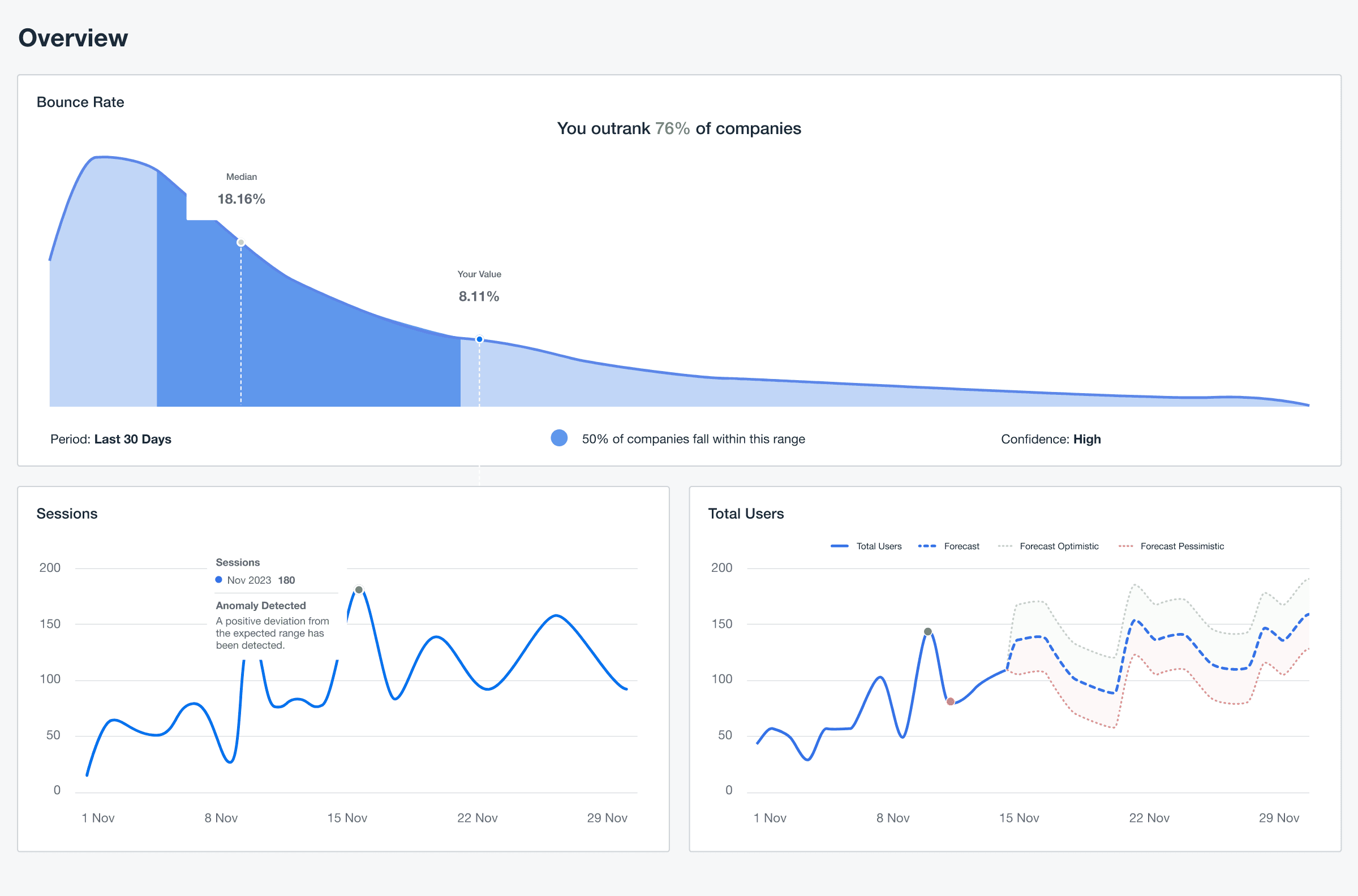
Forecast trends, spot opportunities, and optimize your strategy with AgencyAnalytics’ data forecasting tool. Start your free 14-day trial today!
Supplemental Communication Channels
As mentioned above, client communication doesn’t end when the client exits the meeting. We stay in touch throughout the reporting period as well via a few different channels. This communication also informs our conversation at the next meeting.
Asynchronous Updates
Between formal meetings, we keep clients informed with brief email updates or quick client messages highlighting significant changes or completed tasks. Clients appreciate that they don’t have to wait for the next meeting to know what’s happening.

Integrate AgencyAnalytics with your existing client messaging platform to keep clients engaged and up-to-date on your work. Try it free for 14 days!
Office Hours or Drop-In Sessions
For clients with immediate concerns or questions, we offer short, optional “office hours.” This gives them an easy way to connect with us outside the scheduled meeting, ensuring they always have access to the insights and support they need.
Summary and Key Takeaways
Putting it all together, the combination of transparent, all-in-one reporting and a clearly defined meeting structure has completely transformed the way we work with our clients.
By preparing thoroughly beforehand, guiding discussions with the IDS format, and following up after each session, we’ve created an environment where clients feel informed, respected, and supported. They understand their results, trust our recommendations, and see us as a long-term business partner, invested in their success.
At LeaseMyMarketing, this approach has led to more meaningful conversations, stronger client relationships, and greater retention. Rather than juggling endless reports or rushing through chaotic discussions, we now focus on telling a clear story backed by data.
In doing so, we’ve turned what used to be a confusing and time-consuming process into an opportunity for education, collaboration, mutual connections and growth—ultimately setting the stage for long-term, mutually beneficial partnerships.

Written by
Adam Allen founded LeaseMyMarketing, a Pennsylvania-based marketing agency, in 2015 to help small and medium-sized businesses access and understand their marketing data for informed decision-making. With over 20 years of corporate marketing experience, Allen knew he could apply the same data-driven approach that makes large corporations successful and apply it to their regional and national clientele to create a meaningful marketing impact.
See how 7,000+ marketing agencies help clients win
Free 14-day trial. No credit card required.



